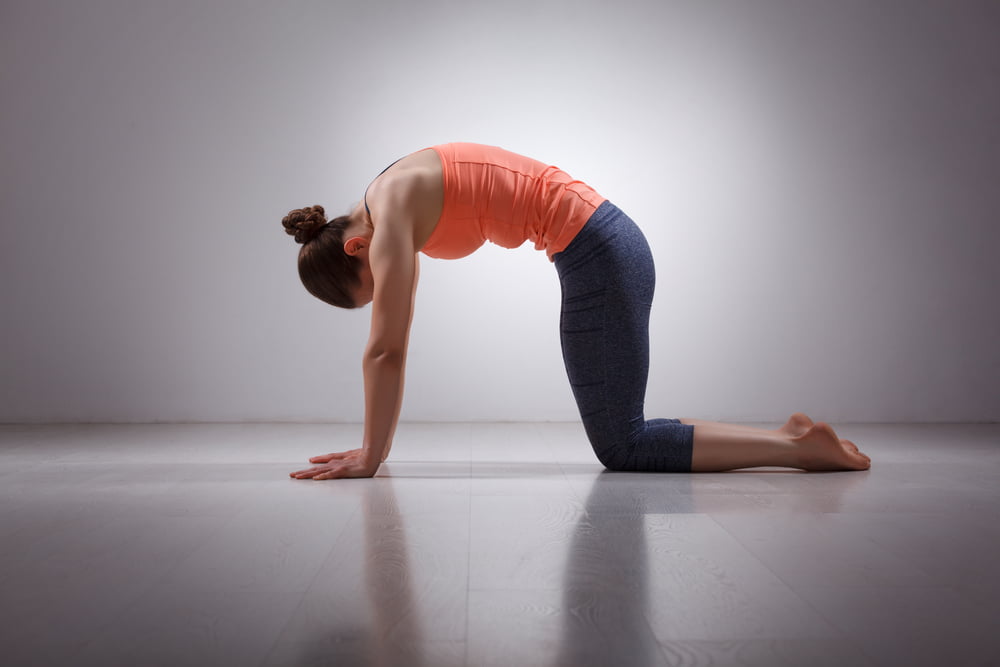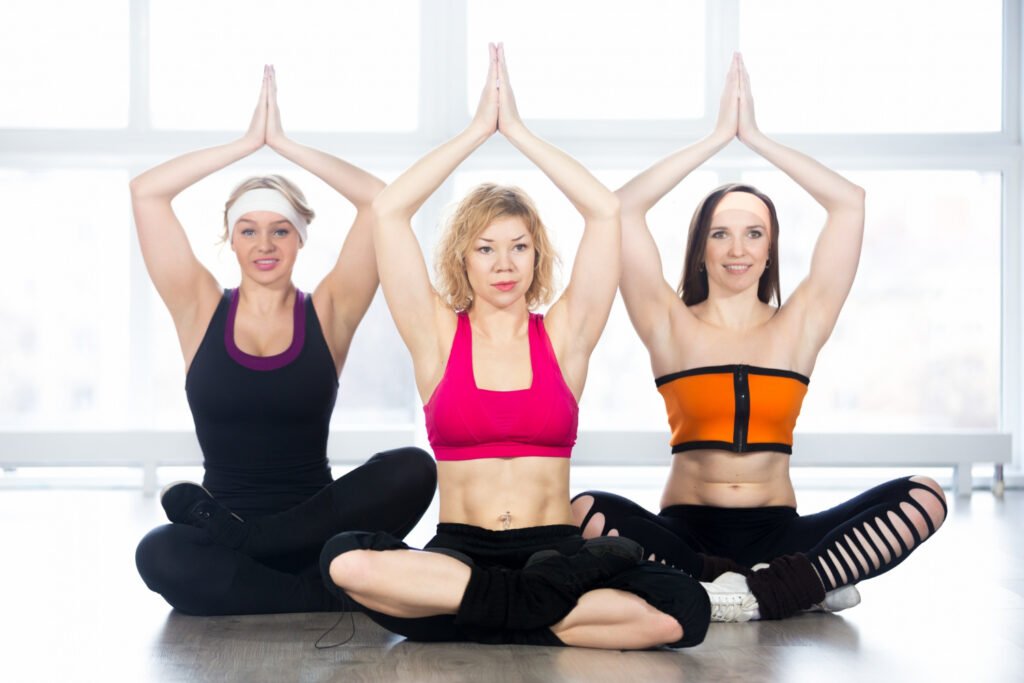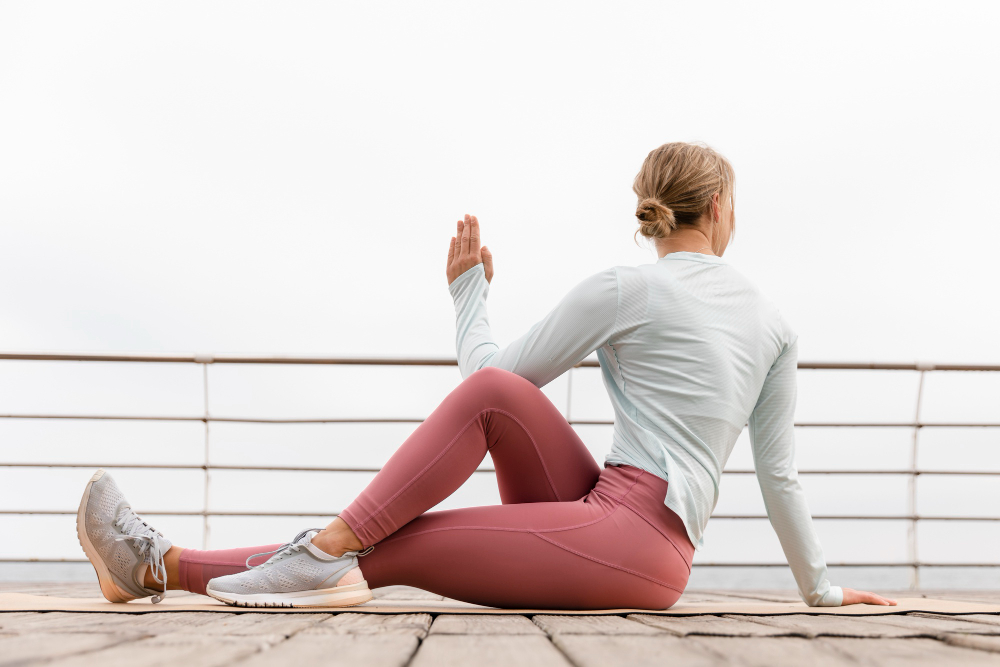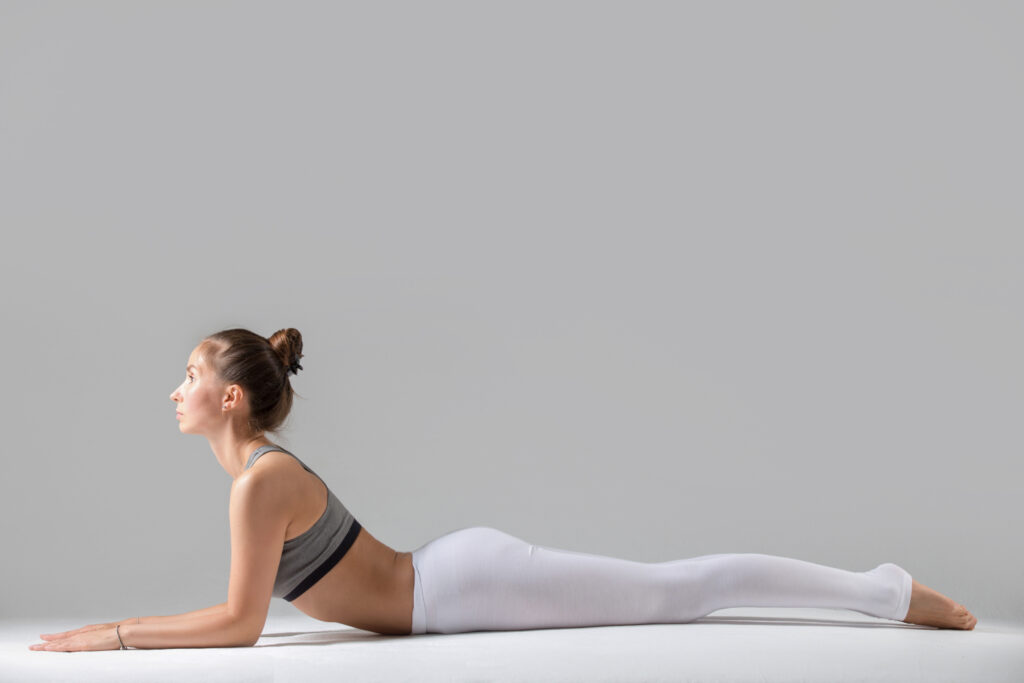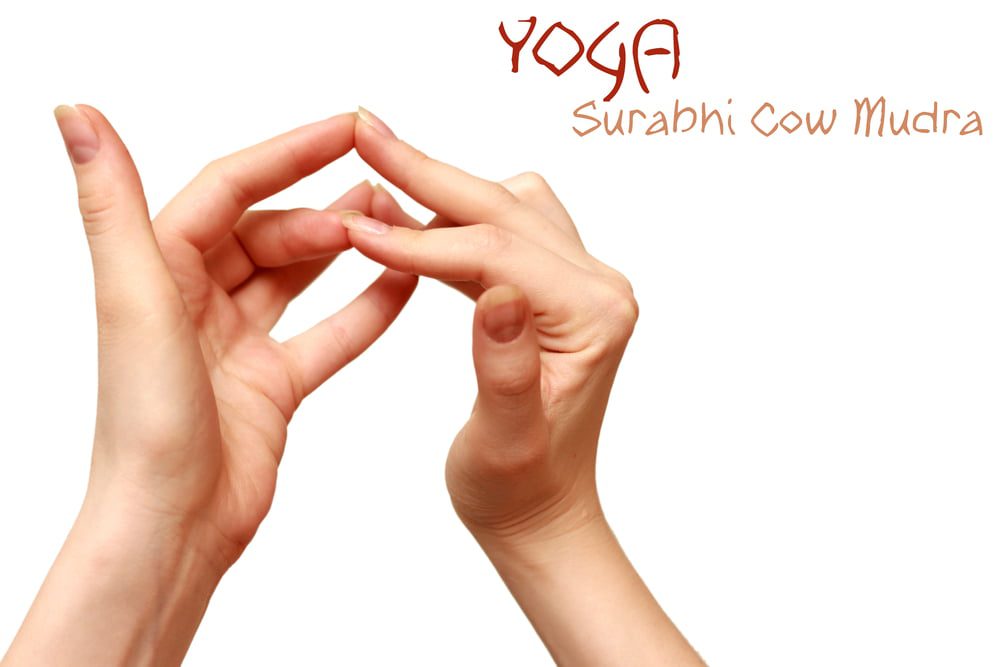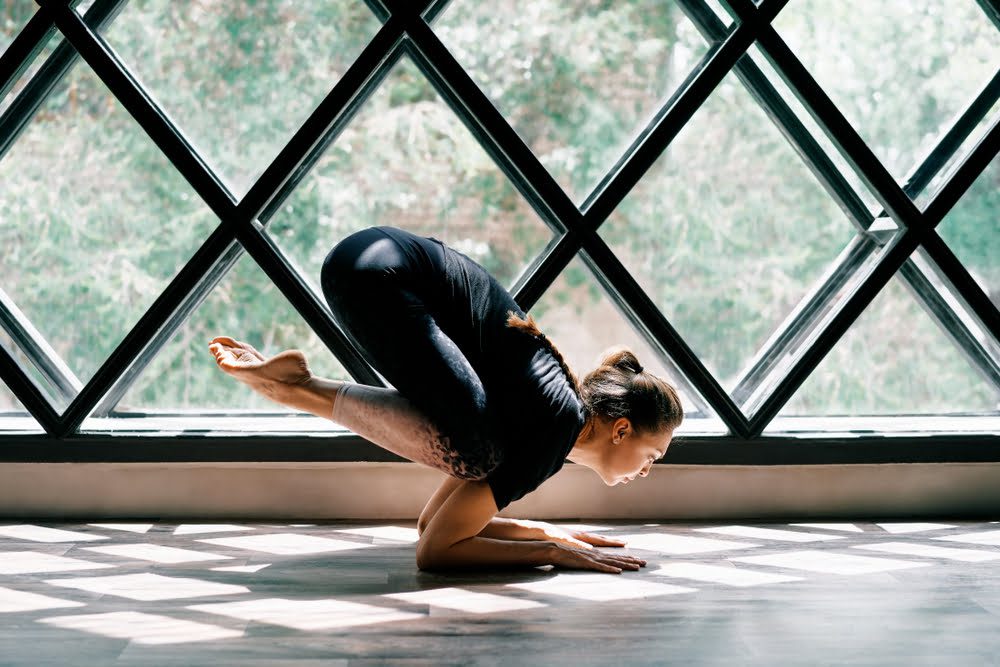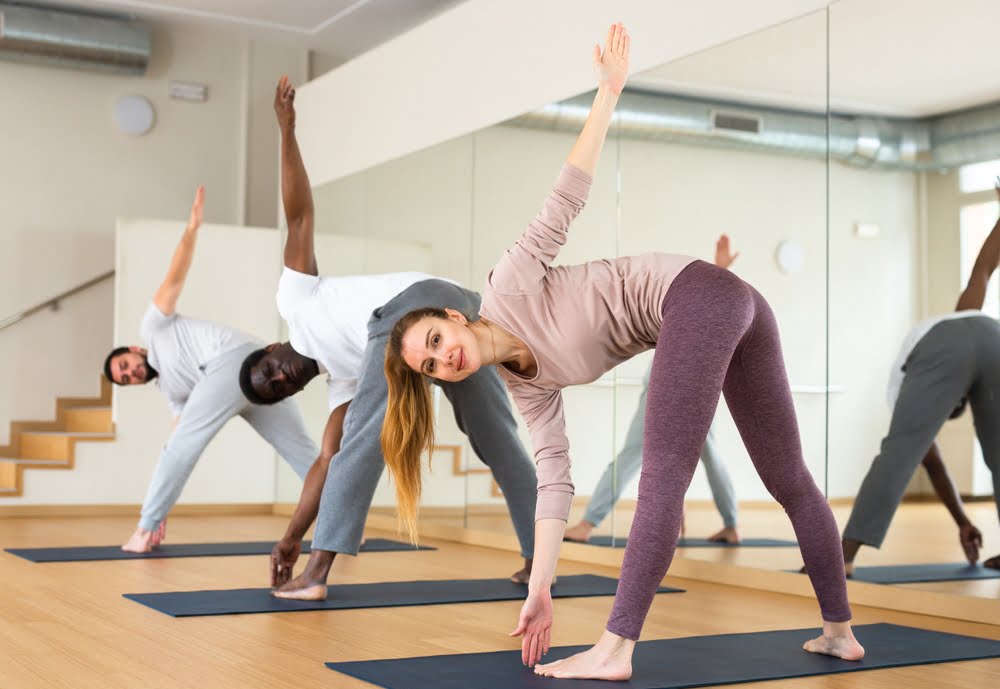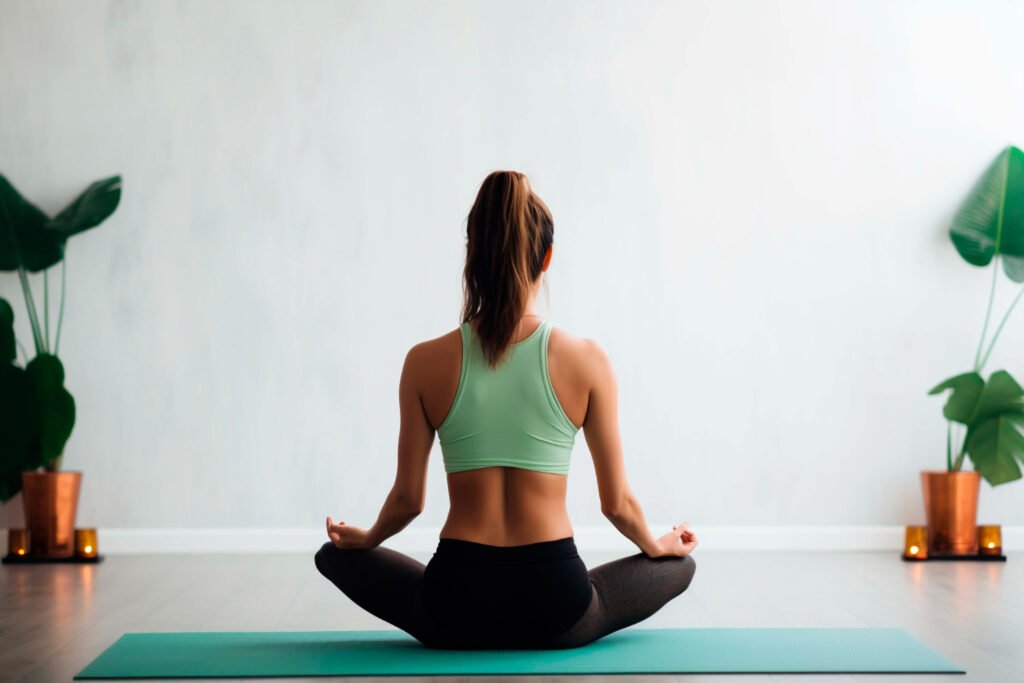Welcome to the world of yoga, where ancient wisdom meets modern lifestyle. In this comprehensive guide, we’ll delve into the intricacies of the reverse cat-cow yoga pose, exploring its benefits, step-by-step instructions, precautions, and common mistakes. Whether you’re a seasoned yogi or a curious beginner, this article will serve as your ultimate companion on the journey to mastering this transformative posture.
Understanding the Reverse Cat-Cow Pose.
The reverse cat-cow pose also known as the cow-cat pose or Bitilasana-Marjaryasana in Sanskrit, is a dynamic combination of two traditional yoga poses: the cat pose (Marjaryasana) and the cow pose (Bitilasana). Unlike its traditional counterparts, the reverse cat-cow pose involves arching the back upward (like a cat) during the inhale and rounding it downward (like a cow) during the exhale, hence its unique name.
Benefits of the Reverse Cat-Cow Pose.
1. Spinal Flexibility: This pose gently stretches and massages the spine, improving flexibility and relieving tension accumulated from sedentary lifestyles.
2. Core Strength: Engaging the core muscles while transitioning between the cat and cow positions strengthens the abdominal muscles, enhancing overall core stability.
3. Stress Relief: The rhythmic flow of breath combined with mindful movement promotes relaxation, reducing stress and anxiety levels.
4. Improved Posture: Practicing the reverse v helps align the spine, shoulders, and hips, correcting postural imbalances caused by prolonged sitting or standing.
5. Enhanced Circulation: The alternating movements stimulate blood flow throughout the body, promoting circulation and revitalizing energy levels.
6. Digestive Health: The gentle compression and release of the abdominal organs aid in digestion, alleviating bloating and discomfort.
7. Mind-Body Connection: Focusing on the breath and movement cultivates awareness, fostering a deeper connection between mind, body, and spirit.
How to Perform the Reverse Cat-Cow Pose?
1. Start in Tabletop Position: Begin on your hands and knees, aligning your wrists directly under your shoulders and your knees under your hips. Spread your fingers wide for stability.
2. Inhale for Cow Pose: As you inhale, arch your back and lift your chest and tailbone towards the ceiling, allowing your belly to sink towards the floor. Lift your gaze slightly.
3. Exhale for Cat Pose: On the exhale, round your spine towards the ceiling like an angry cat, tucking your chin towards your chest and drawing your belly button towards your spine. Allow your head to hang naturally.
4. Repeat the Flow: Continue flowing between the cow and cat poses with each breath, synchronizing movement with breath for a fluid and dynamic practice.
5. Duration: Aim to practice the reverse cat-cow pose for 5-10 breaths, gradually increasing the duration as you become more comfortable with the movement.
Precautions to Consider.
1. Listen to Your Body: Pay attention to any discomfort or pain during the pose, and modify or skip it if necessary. Honor your body’s limitations and avoid pushing yourself beyond your edge.
2. Avoid Overarching: While in the cow pose, be mindful not to overarch the lower back, which can strain the lumbar spine. Keep the movement fluid and controlled.
3. Protect Your Wrists: If you have wrist issues, place a folded blanket or yoga mat under your wrists for support, or try using yoga blocks to elevate your hands.
4. Modify for Pregnancy: Pregnant women should practice with caution, avoiding deep backbends and focusing on gentle movements that support the growing belly.
5. Consult a Professional: If you have any pre-existing medical conditions or injuries, consult a qualified yoga instructor or healthcare provider before attempting the reverse cat-cow pose.
Common Mistakes to Avoid.
1. Rushing Through the Movement: Avoid rushing through the pose or sacrificing proper alignment for speed. Slow down and focus on the quality of movement and breath.
2. Collapsing in the Shoulders: Maintain stability in the shoulders by pressing firmly into the ground and drawing the shoulder blades down the back. Avoid collapsing into the shoulders or hunching forward.
3. Forgetting to Breathe: Remember to synchronize movement with breath, inhaling as you arch into the cow pose and exhaling as you round into the cat pose. Avoid holding your breath or breathing shallowly.
4. Overarching the Neck: Keep the neck in line with the spine, avoiding excessive tilting or lifting of the head. Imagine lengthening through the back of the neck to maintain a neutral alignment.
5. Neglecting the Pelvic Floor: Engage the pelvic floor muscles (Mula Bandha) throughout the pose to support the lower back and promote stability. Avoid collapsing or sinking into the pelvis.
Expert Insights.
We spoke with experienced yoga instructor, Emily Smith, who shared her insights on the reverse cat-cow pose:
“The reverse cat-cow pose is a wonderful way to awaken and energize the spine while cultivating mindfulness and presence. Focus on the fluidity of movement and the sensation of breath moving through the body to deepen your practice.”
Scientific Evidence.
While research specifically on the reverse cat-cow pose is limited, numerous studies have highlighted the benefits of yoga for spinal health, stress reduction, and overall well-being. According to a systematic review published in the Journal of Yoga & Physical Therapy, regular yoga practice has been associated with improvements in spinal flexibility, muscle strength, and psychological well-being.
Frequently Asked Questions.
Yes, the reverse cat-cow pose can be modified to suit all levels of practitioners, making it accessible for beginners.
While individual results may vary, the gentle stretching and mobilization of the spine in this pose can provide relief for some individuals with mild back discomfort.
Unlike the traditional cat and cow poses, which involve arching and rounding the spine in opposite directions, the reverse cat-cow pose combines these movements into a seamless flow, adding a dynamic element to the practice.
It’s generally recommended to practice yoga on an empty or light stomach to avoid discomfort. Wait at least 2-3 hours after a large meal before practicing the reverse cat-cow pose.
Bottom Line.
The reverse cat-cow pose offers a myriad of benefits for both the body and mind, making it a valuable addition to any yoga practice. By following the step-by-step instructions, honoring your body’s limitations, and avoiding common mistakes, you can safely and effectively harness the transformative power of this dynamic posture. Remember to breathe, stay present, and enjoy the journey as you explore the depths of your practice.
How we reviewed this article:
Our team of experts is always monitoring the health and wellness field, ensuring that our articles are updated promptly as new information emerges. See Our Editorial Process
May 13, 2025
Written By: Sharon LeBow
Reviewed By: Kim Ross
Written By: Sharon LeBow
Reviewed By: Kim Ross

 Workout
Workout
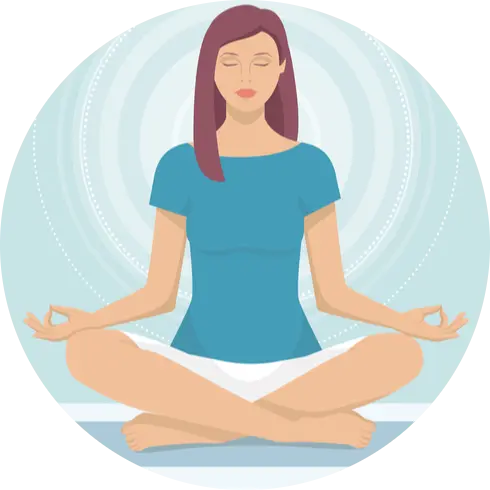 Meditation
Meditation





 Contact Us
Contact Us

